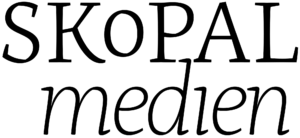This is the third and last part of my series concerning my ideas on the future of digital media. After discussing the ’net in the first and the hardware to get access to it in the second installment, i will now try to cover the software part of connectedness. I have disabled comments for this post. For discussion of this and the other two related articles, please head over to wbf2010.at. Reopened comments. Software After having successfully established the possibility of getting connected with everybody at all times, software defines all functionality building upon this universal connectedness. Software tries to inscribe specific usage scenarios into itself, but it has to be continuously adapted because of users utilizing the software in ways not intended by it’s programmers in the first place. The way of the connected masses will always stretch the limits of published software, just as the connected few are the most powerful group structure for the basic innovation of functionality in the first place. Since all software is written in structured programming languages, written pieces of software should be treated like every other wirtten piece in every other language, especially when it comes to patenting. Therefore, software should be treated only by copyright laws and not by patenting laws. Social Media Social Communications and Collaboration is considered one of the top 10 strategic technologies for 2011 by Gartner. As such, it was not the hardest prediction to make, since Facebook now captured half a billion people, of which 50% log …
